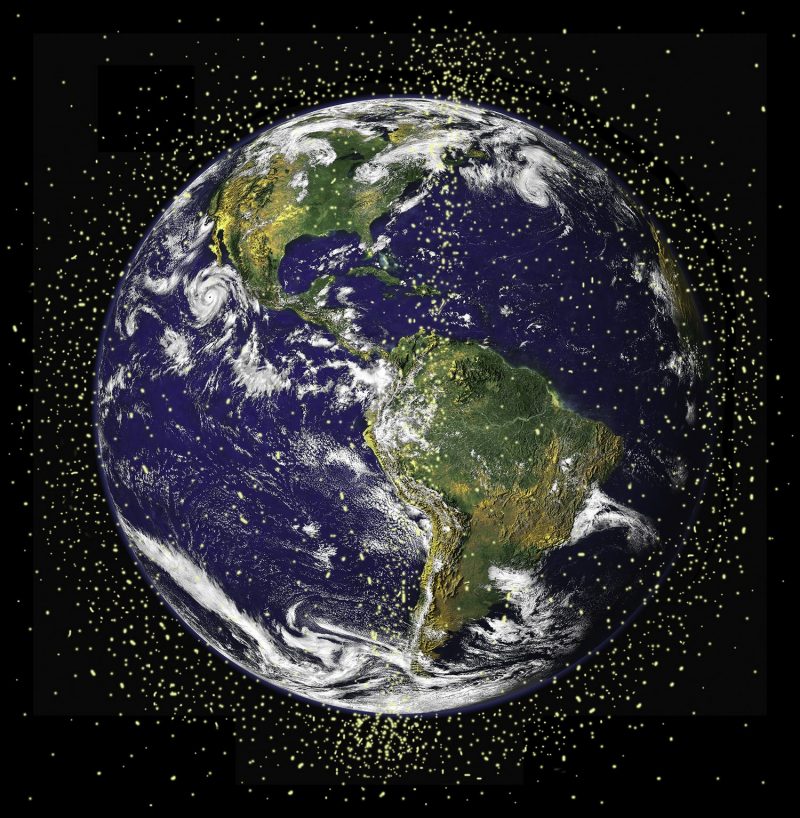
Shooting gallery in a bad neighborhood
Two pieces of leftover Soviet-era space junk passed within feet of each other last month, narrowly avoiding a collision that would have filled their region of near space with thousands of tiny bits of space debris.
LeoLabs is a private company that tracks objects as small as four inches (10 cm) in low-earth orbit, from stations in the U.S. and New Zealand. It said that – on the morning of January 27, 2023 – a rocket body passed as close as 19.7 feet (six meters) from a defunct satellite (launched in the late 20th century). That’s knuckle-whitening distance, in orbit! And this near-disaster happened at an altitude of 611 miles (984 km) above Earth’s surface.
Too close for comfort… ?
Two large, defunct objects in #LEO narrowly missed each other this morning — an SL-8 rocket body (16511) and Cosmos 2361 (25590) passed by one another at an altitude of 984km. ??? #SpaceDebris pic.twitter.com/pF9o6BuZ5Q
— LeoLabs (@LeoLabs_Space) January 27, 2023
Previously, the company described the area of low-Earth orbit from 590 to 650 miles (950 to 1,050 km) as a bad neighborhood. That’s because it’s one of several areas filled with hundreds of leftover spacecrafts from decades of launches.
3/ This region has significant debris-generating potential in #LEO due to a mix of breakup events and abandoned derelict objects. ????
— LeoLabs (@LeoLabs_Space) January 27, 2023
About 160 spent upper stages from rockets launched from the USSR and an equal number of the dead satellites they carried haunt the region. In just four months, from June to September 2022, there were 1,400 “conjunctions”, each one a potential disaster, as LeoLabs reported.
Worst-case space junk disaster is waiting to happen
What’s more, if the two objects – an SL-8 rocket body and Cosmos 2361 – hit, it would have filled the immediate region of space with thousands of shards traveling at breakneck speeds. The bad neighborhood would then become choked with a growing cloud of tiny, hard-to-track bits, as debris from the first collision collides with the other uncontrolled objects that share that region of LEO. This phenomenon is called the Kessler syndrome, and the debris would then linger in space for decades.
The expansion would be exponential, LeoLabs explained:
6/ Why's this a big deal? ?
We've identified this kind of collision — between two massive derelict objects — as a "worst-case scenario" because it's largely out of our control and would likely result in a ripple effect of dangerous collisional encounters.
— LeoLabs (@LeoLabs_Space) January 27, 2023
A graphic shared by Jonathan McDowell at the Harvard-Smithsonian Center for Astrophysics shows just how close we came to disaster:
Updated miss figure: S3M stage and Parus sat passed within 50 metres (LeoLabs approx upper limit estimate) and possibly within 6 metres (LeoLabs best estimate).
Figure to scale pic.twitter.com/pkQb1BLKkE— Jonathan McDowell (@planet4589) January 28, 2023
The 2023 lunar calendars are still available and now on sale. Order yours before they’re gone!
Cleaning up our act
Obviously, making space safe for future exploration and habitation means avoiding collisions in the future and cleaning up the junk that’s already posing a deadly danger to those brave enough to travel beyond the atmosphere.
Currently, the US Department of Defense Space Surveillance Network is tracking more than 27,000 pieces of space junk surrounding Earth and traveling at at least 17,500 mph (28,160 km/h). But those are just the ones large enough to track.
And according to the Natural History Museum of London, there are about 34,000 bits of space junk four inches (10 cm) or bigger in orbit – the ESA’s 46-foot (14-meter) defunct Envisat is probably the largest – and “millions of smaller pieces that could nonetheless prove disastrous if they hit something else.
Thus, it’s an issue at the forefront of thinking at LeoLabs:
7/ It's imperative that we not only focus on collision avoidance but also debris mitigation and debris remediation to combat #SpaceDebris. This requires investing in debris removal technologies and missions. ???
— LeoLabs (@LeoLabs_Space) January 27, 2023
So, to increase awareness, the company offers advice via its blog on how to make the local space lanes safe. The keys, LeoLabs said, are clearing debris we know about and knowing what to do when a big on-orbit collision inevitably happens.
Bottom line: Two large pieces of Soviet-era space debris narrowly missed colliding in a space junk disaster on January 2023.











